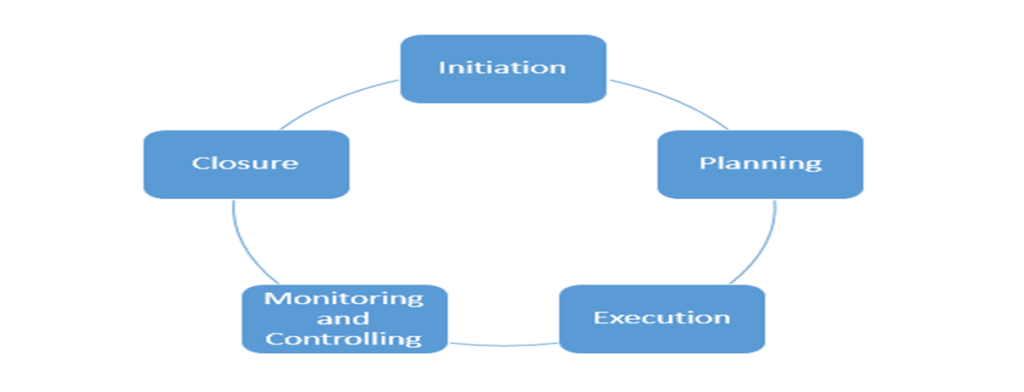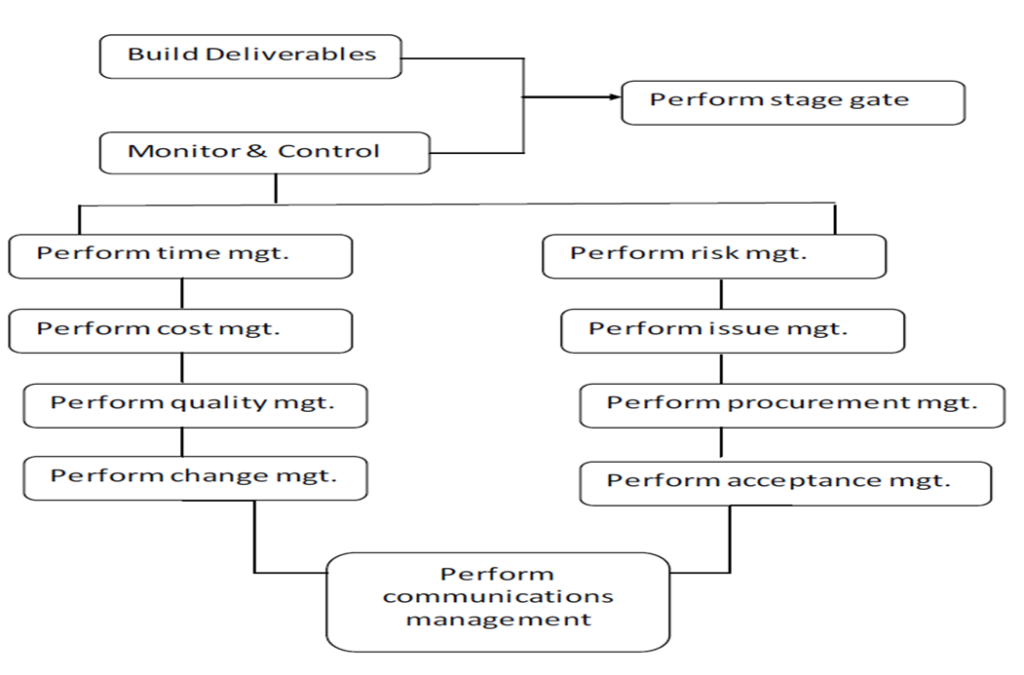Project life cycle
The project life cycle serves to define the beginning and the end of a project. For example, when an organization identifies an opportunity to which it would like to respond, it will often authorize a needs assessment and/or a feasibility study to decide if it should undertake the project. The project life-cycle definition will determine whether the feasibility study is treated as the first project phase or as a separate, standalone project.

Initiation
The first of a project is the initiation phase. During this phase a business problem or opportunity is identified and a business case providing various solution options is defined. Next, a feasibility study is conducted to investigate whether each option addresses the business problem and a final recommended solution is then put forward. Once the recommended solution is approved, a project is initiated to deliver the approved solution. Terms of reference are completed outlining the objectives, scope and structure of the new project, and a project manager is appointed.
•Develop a business case
•Undertake a feasibility study
•Establish the terms of reference
•Appoint the project
•Set up a project office
•Perform stage gate

Planning
Once the scope of the project has been defined in the terms of reference, the project enters the planning phase.
Project plan outlining the activities, tasks, dependencies and timeframes;
Resource plan listing the labor, equipment and materials required;
Financial plan identifying the labor, equipment and materials costs;
Quality plan providing quality targets, assurance and control measures;
Risk plan highlighting potential risks and actions to be taken to mitigate those risks;
Acceptance plan listing the criteria to be met to gain customer acceptance;
Communications plan describing the information needed to inform stakeholders;
Procurement plan identifying products to be sourced from external suppliers.
Planning
Create a project plan
Create a Financial Plan
Create a Quality Plan
Create a Risk Plan
Perform stage gate
Contact the suppliers
Create a procurement plan
Create a Communication plan
Create an Acceptance Plan

Execution
This phase involves implementing the plans created during the project planning phase. While each plan is being executed, a series of management processes are undertaken to monitor and control the deliverables being output by the project. This includes identifying change, risks and issues, reviewing deliverable quality and measuring each deliverable produced against the acceptance criteria. Once all of the deliverables have been produced and the customer has accepted the final solution, the project is ready for closure.


Monitoring and controlling
Monitoring and controlling involves actively reviewing the status of your project as it proceeds, evaluating potential obstacles, and implementing necessary changes
Monitoring and control phase happens in tandem with the execution phase. What it involves depends on how a project is organized and defined.
Project management monitoring and controlling means actively reviewing the status of your project as it proceeds, evaluating potential obstacles, and implementing necessary changes.
During this phase, organizations need to juggle several responsibilities, including:
•Keeping to the schedule
•Staying within budget
•Managing risk

Closure
Project closure involves releasing the final deliverables to the customer, handing over project documentation to the business, terminating supplier contracts, releasing project resources and communicating the closure of the project to all stakeholders.
•Perform project closure
•Review project completion

